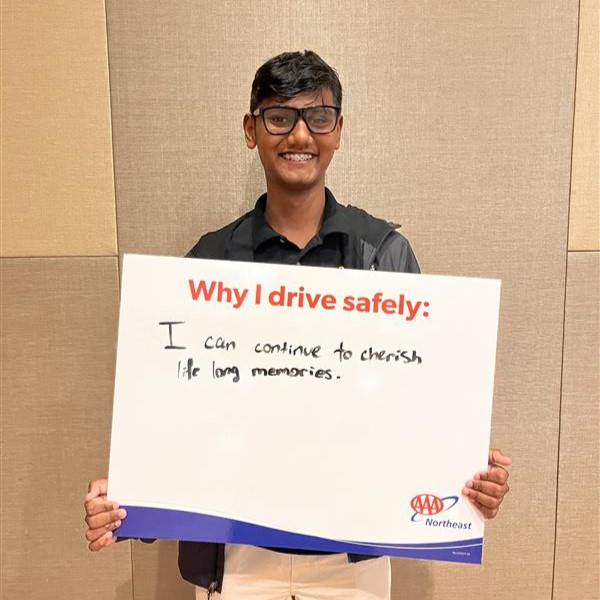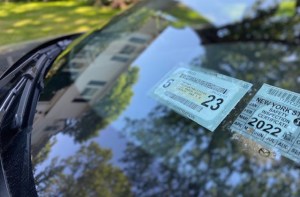The harsh realities of distracted and impaired driving were presented to more than 100 high school students at AAA Northeast’s recent event, AAA to Gen Z: A Safety Summit for the New Generations of Drivers, held at Adelphi University in Garden City, N.Y.
Speakers from law enforcement, the local district attorney’s office, advocacy groups and representatives from AAA Northeast told students from seven Long Island high schools that, while it may be hard to imagine a tragedy happening to them, all it takes is one lapse in judgement or a nanosecond of distraction behind the wheel to end a life.
“I’m here to scare you,” said Maureen McCormick, special assistant for legislative initiatives for the Suffolk County district attorney’s office and a 38-year prosecutor. “Not to death, but enough to save your own lives.”
Deadly Distractions
The statistics are scary enough. On average, one alcohol-impaired-driving fatality occurred every 39 minutes in 2022, according to the most recent data from the National Highway Traffic Safety Association. The 15- to 20-year-old age group makes up 17% of that total.
Equally as concerning are the rise in drivers using marijuana and crashes involving distracted drivers, often caused by cellphone use, a particular problem with younger drivers. Statistics show that 56% of teens text while driving.
Rich Faber, a health and driver’s education teacher at Syosset High School, said fighting distractions is his biggest concern when it comes to new drivers. “Kids have always been in cars with phones,” he said. “They are not used to looking at the surroundings.”
While AAA surveys show that the age group most engaged in speeding and distracted driving is between 19 and 24 years old, Alec Slatky, managing director for government and public affairs for AAA Northeast, told the students that they will be that age soon enough. “The habits you start today are going to last a lifetime,” he said.
Promoting responsible driving behavior and making the roads safer are at the core of AAA’s mission. “…We know our roads are getting deadlier for everyone,” said Slatky. “As students are getting out of school, they face more risk on the road, so we wanted to take this opportunity to give them tips to keep themselves, their passengers and others safe.”
Rachel Liu, a junior at Syosset High School who completed her school’s driver’s education course, said she came because she wanted to learn more about being a safe driver before taking her driver’s test. “I’m hoping this will cement the ideas in my head,” she said.

Preventable Tragedies
Speakers emphasized that many crashes are preventable. They urged students to speak up if they are in a car with someone who is impaired or if they see a driver who is impaired. And, again and again, reminded them to stay off their cellphones.
McCormick said she has seen many terrible crimes during her career, though not all committed by terrible people. Some continue to haunt her. She choked up recalling the 2005 case of drunk driver Martin Heidgen hitting a limousine head-on while driving the wrong way. The limousine was carrying six members of the Flynn family returning from a wedding. The limo driver, 59-year-old Stanley Rabinowitz, was killed, as was 7-year-old Katie Flynn. When the dash cam video of the moment of the crash was shown at the summit, many in the room jumped. Heidgen was convicted of depraved indifference murder and sentenced to 19 years to life in prison.
Particularly dismaying is the rise in dangerous behavior, such as drivers using marijuana, driving as fast as possible and recording themselves while driving, according to McCormick.
“Put your phone away, put it in the glove box, stop taking selfies while driving. It’s your responsibility to drive like you care about other people,” she said. “I’m begging you as a mom. Don’t hold your lives so cheaply.”
One student from Uniondale High School, who chose not to give her name, told a AAA representative she was going to be more careful not to get in a car with someone who had been drinking.
One Bad Choice
Audience members were visibly moved by the story of Alisa McMorris, whose 12-year-old son, Andrew, was killed by a drunken driver in 2018. He was hiking with his Boy Scout troop, including his father, when the car plowed into them. Several other scouts were severally injured.
In their son’s memory, the McMorris family started The Andrew McMorris Foundation, which advocates for measures to curb drunken driving and provides grants and scholarships.
“What keeps killing me is how this was preventable,” McMorris said.
Have a Plan Before You Go Out
McMorris offered students these tips to help keep them safe:
- Before you even go out, ask “How are we getting home?”
- If you are in a car with someone who is not sober enough to drive, say you are going to be sick and get out. Save face, save a life.
- Do not text and drive.
- Always have money to get home.
- Make a deal with your family to give you a ride if something happens.
“It’s about empowerment,” McMorris said. “They (students) have the ability to make a change.”
“You don’t realize what could happen until you hear the actual stories,” added Amy Berenbroick, a 10th grader at South Side.
Be A Hero
Karen Torres, president and founder of ALL4UDAD, a program for road safety education and advocacy, stressed to the crowd how easy it is to get distracted, and used several interactive activities to demonstrate. She lost her father, who was working on a road crew, when a cement truck driver dropped his bottled water. When he bent to retrieve it, he veered into her father. “It takes a conscious effort every time you get in the car not to be distracted.”
A major goal of the summit was to give students the courage to be advocates for themselves and others. “The biggest takeaway for the teens is that they should speak up if they feel like unsafe behavior behind the wheel is taking place or about to take place,” said Slatky. “Speaking up is not easy – especially if you’re talking to family or friends – but they can come up with some lines beforehand to have in their back pocket if these situations arise.”
How do you teach your teen to drive safely? Tell us in the comments.
Featured image: The AAA Public Affairs team at the summit.













